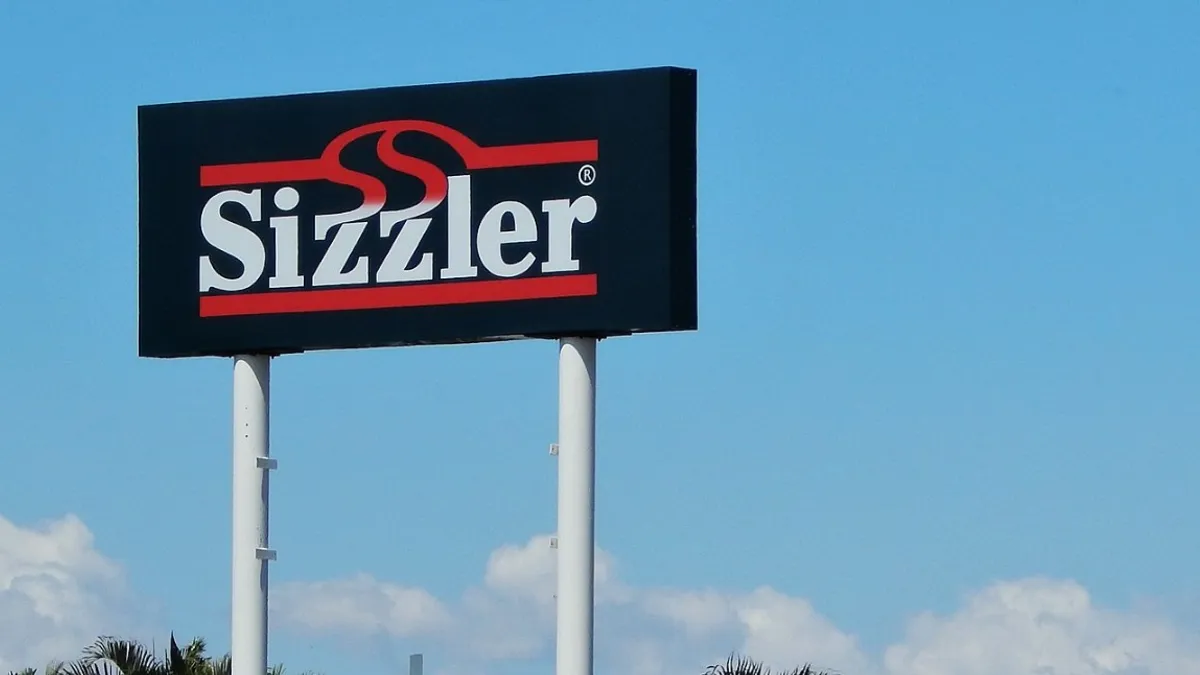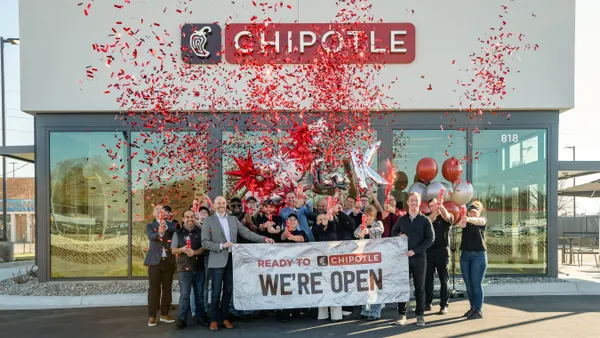Dive Brief:
- Sizzler USA filed for voluntary Chapter 11 bankruptcy protection on Monday and will begin a restructuring process that will allow the family casual steakhouse to reduce long-term debt and renegotiate leases with landlords at its 14 company-owned restaurants during the bankruptcy process, according to a press release. In the bankruptcy filing, the company said its liabilities are between $1 million and $10 million.
- The company has also filed customary motions with the bankruptcy court to allow it to meet its contractual obligations, including fulfilling its financial commitments to employees, its vendors and over 90 franchised locations. Sizzler plans to complete the Chapter 11 process within about 120 days. Franchisees will not be impacted by this process, Chris Perkins, Sizzler’s president and chief services officer, said in a statement.
- Sizzler is the latest casual dining company to file for bankruptcy protection due to the financial impacts of COVID-19, which pitted the chain against long-term indoor dining room closures and landlords that did not provide rent abatements, according to the press release. CEC Entertainment and California Pizza Kitchen have also filed for Chapter 11, while Luby’s is considering a sale of its assets.
Dive Insight:
This bankruptcy filing isn't Sizzler's first. In 1996, when it was a public company and past sales had neared $1 billion, it closed 136 company-owned restaurants mainly focused in the East Coast following a Chapter 11 filing. The company has also gone through several owners since then. It was first purchased by Pacific Equity Partners, which led it to become a private company in 2005, then bought by a Sizzler-led management group, which acquired Sizzler's USA assets in 2011.
Soon after, the company rebranded, focusing on fresh, quality ingredients and reconnecting with former customers. The rebrand led to a 20% increase in sales and guest count in 2012. But the chain's sales declined by 2.5% in 2018 and by 3.8% in 2019, despite some low to single-digit growth in 2016 and 2017, according to Technomic data.
In Sizzler's most recent bankruptcy filing, the company says its landlords were unwilling to provide rent abatements. It's possible other chains and independents could face similar issues and bankruptcy, especially as sales continue to struggle and alternative funding like Paycheck Protection Program loans run out.
What may help Sizzler is that lenders have been willing to work with other casual chains that have declared bankruptcy. CEC Entertainment, for example, was able to secure $200 million in debtor-in-possession financing to help bolster its operations. With over 90 franchised units out of 107, Sizzler also won't likely see many closures or disruptions to its restaurants, either.
"[Monday's] decisive action to build a stronger future for Sizzler will allow us not only to do everything we can to support our employees and franchisees during this time, but also to be better-positioned for growth as we emerge to become a more vibrant company," Perkins said.












